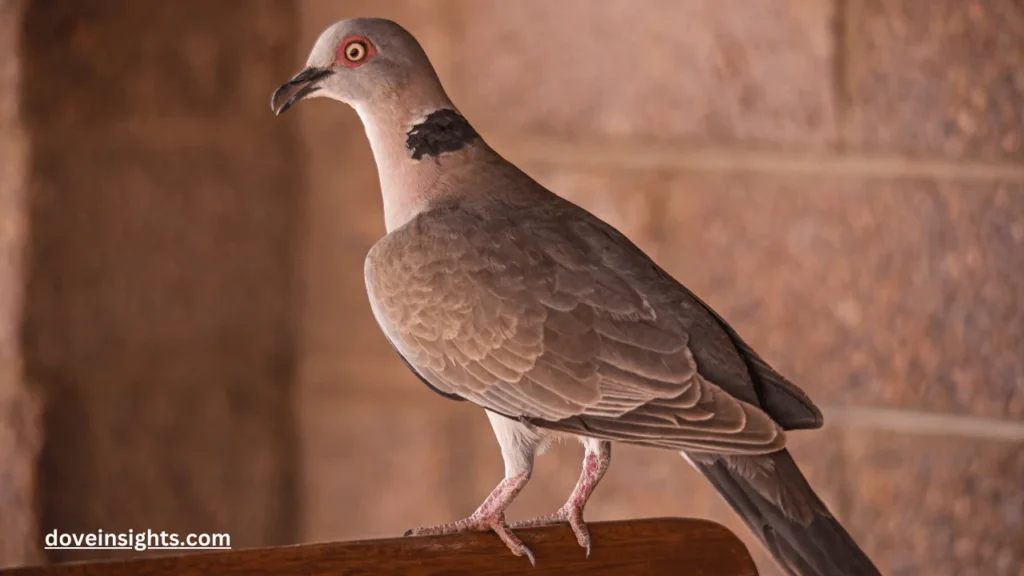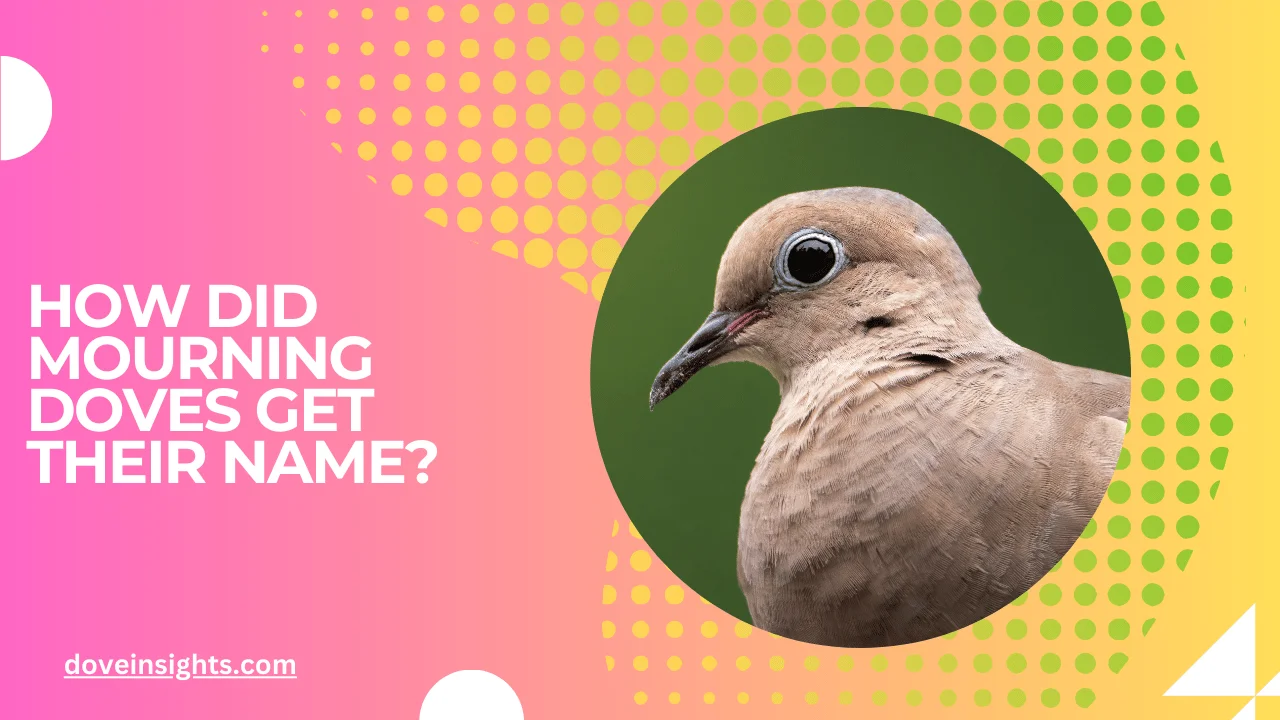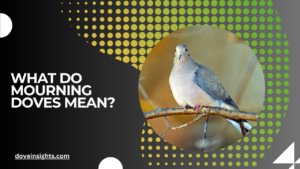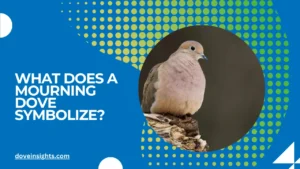The mourning dove is one of the most recognizable birds in North America, with its gentle cooing calls and graceful flight.
For many bird lovers, the mourning dove is a symbol of peace and serenity. But have you ever wondered why this bird is called a mourning dove? The name, with its somber tone, seems to hint at something deeper, something beyond just the bird’s gentle demeanor.
Is it the soft cooing that sounds like a mourning cry? Or is there a hidden story behind the name that traces back to ancient times?
This article will explore how the mourning dove got its name, diving into historical, linguistic, and cultural perspectives that have shaped the bird’s identity.
From the origins of the name to the symbolic significance it holds, we will uncover the layers of meaning behind this quiet, graceful bird.
If you’ve ever been intrigued by the connection between names and nature, or if you’re simply curious about the mourning dove’s story, this guide will provide a fascinating look into how this bird came to be known by such a distinctive moniker.
Contents
- 1 The Etymology of “Mourning Dove”
- 2 The Symbolism of Mourning Doves in Different Cultures
- 3 Mourning Dove’s Vocalizations: The Sound Behind the Name
- 4 The Mourning Dove in Popular Culture
- 5 The Mourning Dove’s Evolution and Migration: A Historical Perspective
- 6 Conclusion:
- 7 FAQ’s
- 7.0.1 Why is it called a “mourning dove”?
- 7.0.2 Is the mourning dove really mourning?
- 7.0.3 How does the mourning dove’s call sound?
- 7.0.4 Are mourning doves associated with any specific cultural symbolism?
- 7.0.5 Does the mourning dove migrate?
- 7.0.6 Why do mourning doves often appear during dawn or dusk?
The Etymology of “Mourning Dove”
To understand how the mourning dove got its name, we must first delve into the origins of its name. The term mourning refers to the act of grieving or expressing sorrow, which is an interesting choice for such a peaceful, non-aggressive bird.
In fact, the name has little to do with the bird’s actual behavior and more with the sounds it makes. The word mourning in this case is not derived from the emotion of sadness but from its similarity to the word morning.
The mourning dove’s soft, haunting call resembles the sound of someone mourning or lamenting, which is where the association comes from.
Early English settlers likely heard this long, drawn-out cooing sound and likened it to a mourning cry. While the bird itself was neither sad nor sorrowful, the mournful tone of its call likely led to its adoption of the “mourning” label.
Interestingly, the name “morning dove” was also used historically, reflecting the bird’s soft sounds that could be heard at dawn, blending the concept of the morning with the emotional connection to mourning.
The Symbolism of Mourning Doves in Different Cultures
The name “mourning dove” evokes not only sadness but also peace, hope, and renewal in various cultures.
In Native American cultures, doves often symbolize love, peace, and spiritual presence, so the association of the word mourning may have deeper symbolic connotations. In some tribes, the mourning dove is seen as a messenger, linking the human world with the spirit world.
For Christians, the dove is a symbol of the Holy Spirit and peace, and many cultures view doves as a symbol of love and sacrifice.
The quiet coo of the mourning dove often brings to mind themes of comfort during times of loss or grief, which may explain why the bird’s name resonated with so many societies as a symbol of mourning or remembrance. The bird’s association with peace during difficult times has endured through centuries, making its name all the more fitting.
Mourning Dove’s Vocalizations: The Sound Behind the Name
Perhaps the most immediate connection to the bird’s name lies in its vocalization. The mourning dove is known for its soft, melodious cooing, which sounds almost like a slow, mournful sigh.
Birdwatchers and nature enthusiasts have long described the dove’s call as “sad” or “longing,” an apt description of the soothing yet sorrowful tone the bird produces. It’s this vocalization that undoubtedly influenced the name.
The mourning dove’s call consists of a series of low, soft coos, often described as sounding like “coo-COO-coo.”
The bird typically calls in a rhythmic pattern, almost like an echoing sigh. This call, when heard at dawn or dusk, can be emotionally evocative, giving it a connection to the idea of mourning or lamentation.
Interestingly, mourning doves have a wide range of vocalizations, including courtship calls and distress calls, but it is the mournful cooing sound that most strongly associates the bird with the name “mourning.”
The Mourning Dove in Popular Culture
The mourning dove has long captured the imagination of poets, writers, and artists, often symbolizing themes of loss, peace, or solitude. Its name, like its call, carries emotional weight, and this has contributed to its role in literature and culture.
From Shakespeare to modern-day poets, the mourning dove is often used as a symbol of sorrow and longing. In many works, the bird is depicted as a gentle creature, representing the beauty in grief.
In addition, the mourning dove is featured prominently in songs, stories, and folklore, often linked to themes of unrequited love or the pain of separation.
Its association with mourning also resonates in many memorial services and rituals, where the dove is released as a symbol of hope and healing. Over time, the mourning dove has become a universal symbol of calm and comfort during difficult times.
The Mourning Dove’s Evolution and Migration: A Historical Perspective

The mourning dove’s name may also be tied to its historical presence and migration patterns. The bird is native to North America and has a widespread range that spans from southern Canada to South America.
As settlers moved across the continent, the mourning dove’s presence was noted for its gentle cooing and graceful appearance, traits that may have further reinforced its symbolic association with peace and mourning.
The mourning dove is also one of the most abundant and widely distributed birds in North America.
Its migration patterns, which involve long distances between breeding and wintering grounds, may have further contributed to its connection with the idea of loss or absence. The bird’s journey, often covering vast distances, could symbolize a sense of longing, adding another layer to its name.
This migration also speaks to the bird’s resilience and adaptability, qualities that allow it to thrive in a variety of environments.
Conclusion:
The name “mourning dove” is more than just a reflection of the bird’s physical appearance. It encapsulates the bird’s soothing call, its cultural significance, and its emotional symbolism. While the mourning dove’s name may initially seem to be a simple reference to its cooing sound, it is steeped in history, folklore, and meaning.
Its connection to themes of loss, peace, and renewal makes it a bird that holds a special place in the hearts of many.
Ultimately, the mourning dove’s name offers a reminder of the fragility of life and the importance of finding peace in the midst of sorrow.
Whether you’re a birdwatcher, a poet, or simply someone who appreciates the gentle presence of nature, the mourning dove’s name is a poetic reflection of the beauty found in quiet moments of reflection and remembrance.
FAQ’s
Why is it called a “mourning dove”?
The name comes from the bird’s soft, mournful cooing call, which sounds like a lament or sorrowful cry, evoking the feeling of mourning.
Is the mourning dove really mourning?
No, the name is symbolic. The mourning dove does not experience mourning but is named for the tone of its call, which sounds like a sorrowful or mournful cry.
How does the mourning dove’s call sound?
The mourning dove’s call is a soft, repetitive coo, often described as “coo-COO-coo.” It’s a low, melodic sound that can be heard in the early morning or evening.
Are mourning doves associated with any specific cultural symbolism?
Yes, in many cultures, mourning doves symbolize peace, love, hope, and spiritual presence. They are also often linked with themes of loss and remembrance.
Does the mourning dove migrate?
Yes, the mourning dove migrates from its breeding grounds in the northern U.S. and southern Canada to the southern U.S. and Mexico for the winter.
Why do mourning doves often appear during dawn or dusk?
Mourning doves are more active at dawn and dusk, which is when their cooing is most often heard. Their calls are often associated with these tranquil times of day.








